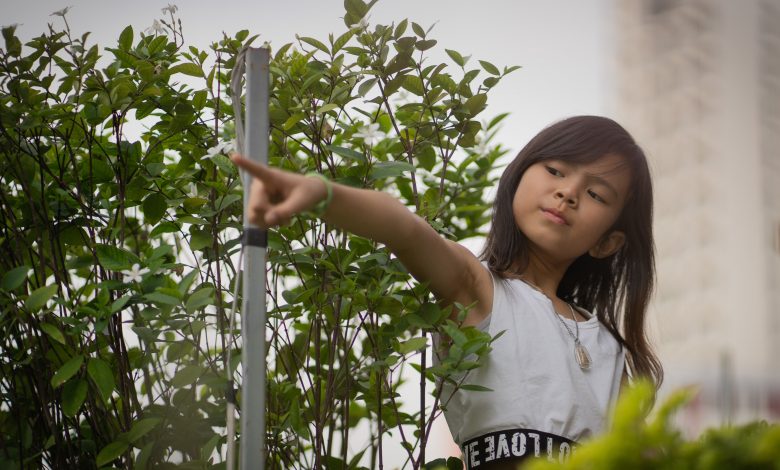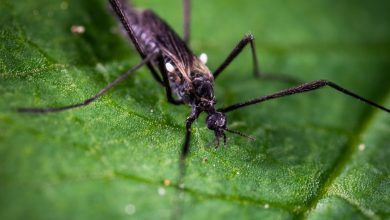How to Introduce Gardening to Children

For those who love to garden, one of the best parts about the hobby is having the ability to pass your knowledge on to others. Gardening has all kinds of positive benefits for us, and knowing that you can teach others how to reap the benefits of gardening is always rewarding.
It is common for a gardener to gather all of their wise knowledge from other, older gardeners who have learned from their mistakes over time. The beauty of gardening is that the hobby can be taken up at any point in life, and one can become very good at it with practice and patience.
For gardeners who want to pass their knowledge down to a child, the process will be different than the approach for teaching an adult. Children can be more naïve and prone to mistakes, but they are also willing to learn from those mistakes and find joy in every part of the process.
If you want to introduce gardening to children, the following are some helpful tips that are sure to make the process interesting, educational, and fun!

Benefits of Gardening for Kids
There are all kinds of benefits to gardening for adults and children alike. Children, in particular, are still learning a lot of basic lessons, and gardening can help them to navigate these lessons in a hands-on and rewarding way.
Some of the most important aspects that gardening can help with include:
Responsibility
Gardening is a great way to teach kids about responsibility without giving them more than they can handle. In this case, the children can learn to tend to their plants, learning what the plants like and what they don’t like.
Gardening is ideal because, if a plant doesn’t survive, children will be able to figure out what they did wrong and try again. It’s especially easy to teach responsibility when the children have their own garden pots; this way they can see how their personal efforts have helped the garden to flourish or caused it to wilt as a result of poor care.
If the children have been taking care of their responsibilities, they can reap the rewards of harvesting their food or creating a bouquet of their flowers.
Sustainability
Gardening is the perfect way to introduce the idea of sustainability to children. With gardening, children are able to learn first-hand about the farm-to-table movement (or rather, the garden-to-table movement).
During their time in the garden, you can explain why sustainability is important and why we must work to lower our carbon footprint in the world. It might be a very detailed topic for a child to take on, but when it comes to the idea of being eco-friendly, we are never too young to begin learning.
Patience
Most children lack patience, and they often turn their attention to new things after a short period of time. This is true now more than ever when technology has allowed us to receive answers and entertainment at the touch of a button.
It is convenient, but these luxuries often give children a false sense of reward. In reality, patience is a virtue, and children must learn to appreciate things that take time and hard work.
Gardening is a labor of love. Children will soon figure out that the best rewards will only appear after days and weeks of hard work. There won’t be a flower that emerges immediately after some leg work; instead, they will learn to tend to, water, and care for something that only appears in the perfect circumstances.
Nutrition
Some children can’t stand the thought of finishing their vegetables, and who can blame them? It’s hard to establish a good relationship with healthy foods when parents are so adamant about them.
Interestingly enough, children who take part in growing their own vegetables often have more interest in trying and eating the foods that they’ve grown from the ground. It has a lot to do with growing the vegetable from seed and taking care of it themselves.
Children are able to learn how food is grown, what it entails, and how good the food can taste when it’s ready to harvest! Of course, most vegetables taste so much better when they’re grown in your own ground, then when they’ve traveled the world in a plastic container.
If you’re trying to decide what kinds of seeds to let your children grow, definitely consider adding in some easy vegetables like tomatoes, carrots, and peppers.
Science
You might not realize it, but as children begin to take an interest in gardening and how everything works, they’re really taking an interest in science.
This is why it’s so important to expose children to new skills and concepts, as opposed to letting them stay inside on their screens all day. You never know what kind of activity will spark the next scientist, doctor, or astronaut.
Even if kids don’t take a huge interest in the actual gardening aspect, they may show interest in the weather you’re studying or the bugs they find in the garden. Keep an eye on the specific things that interest them, and encourage them to find out more about those topics.

Tips for Gardening with Kids
Keep these tips in mind to ensure that your child/children enjoy gardening to the fullest.
Include the Whole Family
Children can sometimes be more willing to try something new if it’s an activity that the whole family is taking part in.
Make it a family affair, where everyone is planting their own seeds and guessing at what will grow from them. Singling children out sometimes makes them weary, but if everyone thinks the activity is fun, then they might be more willing to start taking part.
Keep Their Age in Mind
Gardening might seem easy to you now, but can you remember what it was like when you didn’t know what you were doing?
Gardening can be a little overwhelming to someone who doesn’t know anything about soil quality, seeding, weeding, or even how to use a gardening tool!
Try to keep an open mind when you’re introducing kids to gardening. Remember to apply their age to the amount of information you’re giving them, and use their level of understanding to gauge how much learning they can handle in a day.
Younger children will surely forget some things along the way, and they’ll need reminders about garden etiquette each time they’re in the garden. Additionally, younger children will have less patience for this kind of hobby and may want to see results right away.
This is a great lesson in gardening; however, you can also feed their curiosity by choosing plants that will grow faster for them. This way, they’ll see what their hard work creates and hopefully want to keep gardening more.
Hand Out Plots
Whether you’re working with one child or a few, it’s a great idea to incorporate personal garden plots for each child. If you don’t have the room for that, simply break up an established garden bed into sections.
By giving each child their own plot, you give them the feeling of responsibility for a specific area. You also give them the freedom to plant what they want and to showcase all of their hard work.
In some cases, having individual plots may show how some gardeners are doing better than others, but this is all part of the learning process. You can teach valuable lessons about gardening mistakes this way and allow the children to see what happens in different gardening situations.
Giving children the ability to make their own choices about their garden will help them to make mistakes and learn from them. Additionally, they can implement what they’ve learned and use the space to try again.
Build Suitable Garden Beds
Your garden beds are probably quite large, but the sheer size can be difficult for children to maneuver around (in some cases, they’ll walk right through them).
One way that you can separate your child’s garden area and give them an easier working space is to build them their own raised garden bed. This approach has all kinds of benefits.
First of all, children who are gardening have a tendency to make a mess. This isn’t a bad thing, but having a raised garden bed will make it clear where their soil and flowers need to go. Additionally, you can build a garden bed with smaller dimensions, which allows children to stand on one side and have the ability to access both sides of their garden.
This kind of garden bed will also help to cut back on weed issues and ensure that the plants are getting proper drainage (this is great for kids who really love to use the watering can).
If you do use this method for their gardening plot, make sure to give them lots of room to walk around it. This is an extension of the spatial awareness; place the raised garden bed somewhere where it can have at least two feet of clear space all the way around it. This will help children to avoid tripping and falling, and ensure that there’s enough room for everyone to take part.
Explore All Aspects of the Garden
Naturally, you’ll want to teach children about the fun aspects of gardening, but don’t forget about all the rest of the fun stuff. Kids should feel free to explore all of the components of the garden space, including the visiting wildlife, insects, weeds, and more. Having an awareness of these other components can make them better gardeners.
One of the best lessons to share in the garden is the importance of the pollinators. Children should know that they can welcome bees and butterflies into the garden, and it’s even better if they can learn about how and why the pollinators are so important.
Some children might even want to plant flowers that will attract these pollinators, so long as they know to stay a safe distance from the ones that sting. For little children, it’s best to put emphasis on a butterfly garden, just to be safe.
During garden exploration, children can also learn about how the plants grow, and what they need to survive. Depending on their age, they may even be interested in how the flowers get their colors or how they grow back each year.
Never Use Chemicals
If you want your children to be safe in the garden space, it’s important to make sure that you’re not using any kind of chemicals. This is especially true if the children are trying to grow food that they can harvest and eat.
Embrace an organic garden that is chemical-free, and if you have any pest issues, go for an eco-friendly, organic solution to get rid of them. This can also be an important lesson for kids about being kind to the earth and going green.

Gardening Safety Measures
Gardens can be a dangerous place for someone who doesn’t know their way around. In the case of children, it’s important that they respect the space and know what they can and can’t do.
Garden Tools
Most gardeners have some tools that are either too sharp, too heavy, or too dangerous for children. These tools should be pointed out to the kids and stowed away where they can’t get to them unattended.
Older kids may be given permission to use some tools, but those rights should only be given if they never share with smaller children.
The best approach to this problem is to invest in some kid-friendly gardening tools. These don’t have to be plastic ornaments that don’t actually work; teach them how to use their tools safely and responsibly, and they’ll be able to enjoy proper use of tools like child-sized shovels, garden rakes, and the hose.
Safe Spaces
Most young children, depending on their age, lack some special awareness and coordination when it comes to their bodies. It’s not uncommon for children to do a lot more falling, tripping, and running into things than adults do.
That being said, you’ll want the garden space to be safe for these children. Try to make the space as safe as possible by making sure the ground is flat, any stairs have handles, and there aren’t a lot of pointed corners framing your garden beds.
If you notice that there are some safety hazards around your garden space, consider sectioning off a special area where your kids are permitted to garden. They should stay in this area while they garden, especially if no one is outside to monitor them. However, in all cases, an adult should always be present when the kids are learning how to garden.
Unknown Garden Visitors
Your garden probably attracts lots of regular wildlife like birds, squirrels, and rabbits, but your children should also be aware of the creatures that could be harmful to their gardens.
If you’re introducing gardening to children, it’s beneficial to have them report back any strange insects or creatures that they don’t recognize. They may be identifying pests, some of which can cause irritations to their skin if touched.
Have a rule that if they see anything strange in their garden, that they let you know about it right away. This way, everyone stays safe, and you might be able to help eradicate their plants before potential infestations begin.
Gardens in Small Spaces
If you don’t have a backyard space for your children to enjoy, don’t fret. Kids can learn about gardening in virtually any space, whether it’s a backyard, a balcony, or right indoors.
If you have a balcony, you can always incorporate a smaller raised bed outside. Similarly, there are all kinds of cool planters and pots that you can hang from the ceilings, walls, or railings. Regardless of the space, kids will still be able to reap the benefits of learning how to plant something and taking care of it.
If you don’t have a balcony, indoor plants can be incorporated as well. You can start plants from seedlings in egg cartons and move them into pots when they get big enough.
Alternatively, you can also grow plants with grow lights if your home lacks adequate lighting. Commercial lighting is just as capable of growing flowers, vegetables, and herbs, and there are advantages to having an indoor garden when the weather is bad.

Best Plants for Kids to Grow
While it’s important to teach your children patience when they garden, you can always give them a leg up with a few plants that grow faster than others. These are ideal for the little ones who are anxious to understand what gardening is all about.
For fast-growing plants, sunflowers and tomatoes are best. If properly cared for, tomatoes will give you a great hull throughout the summer, especially if you choose smaller ones like cherry tomatoes. Head to a seed sale, and pick a few tomato varieties to show your children all the amazing colors they grow in.
Other plants to consider include:
Lamb’s Ear
Lamb’s ear is a great plant for kids because it is very hardy and happy to grow in almost any type of soil. The plant is also drought-resistant, so kids who are a bit forgetful won’t have to deal with a wilted plant.
Additionally, lamb’s ear is great as a sensory plant. The leaves are covered in a velvety texture that kids love to touch and explore.
Silver Dollar Plant
If you’re looking for a plant that will really wow your children, then this is the plant to get! The silver dollar plant is easy to grow, and it will intrigue your children with its metallic leaves.
Save the buds of this place for crafting and wreaths, but be wary not to let the plant spread too much. It can be an invasive plant, so growing it in a raised garden bed is best.
Butterfly Bush
If you have full sun in your child’s garden, consider letting them grow a butterfly bush. The plant is hearty and flexible in its conditions. Not only that, but kids will love the bright pink colors.
If your children have shown interest in helping our pollinators, this is an especially great plant to grow. The butterfly bush attracts butterflies, bees, and hummingbirds, and children will love seeing their plant being enjoyed by these animals.
Hens and Chicks
Hens and chicks are a type of succulent, which means they require very little watering. They enjoy both partial or full sun, so you can be flexible with their location. Kids will love hens and chicks because they flourish in all kinds of weird and wonderful shapes and colors.
Additionally, hens and chicks are very easy to separate and transplant in new places. The hearty plant can grow in most locations, so kids can even learn a bit about transplanting with this option.
Introducing Gardening to Children
If you’re wondering how to introduce gardening to children, you’ll be happy to know that there isn’t one specific way. Every child is different, which means they will each learn and develop at their own pace.
If you know the children well, you can accommodate the garden space to their age, personal needs, and skills. If you’re not familiar with the children you’ll be teaching, try to have a range of options available to them so you can both figure out what is comfortable for them.
No matter how you go about it, gardening is a great way to get kids outside and teach them some new skills.



